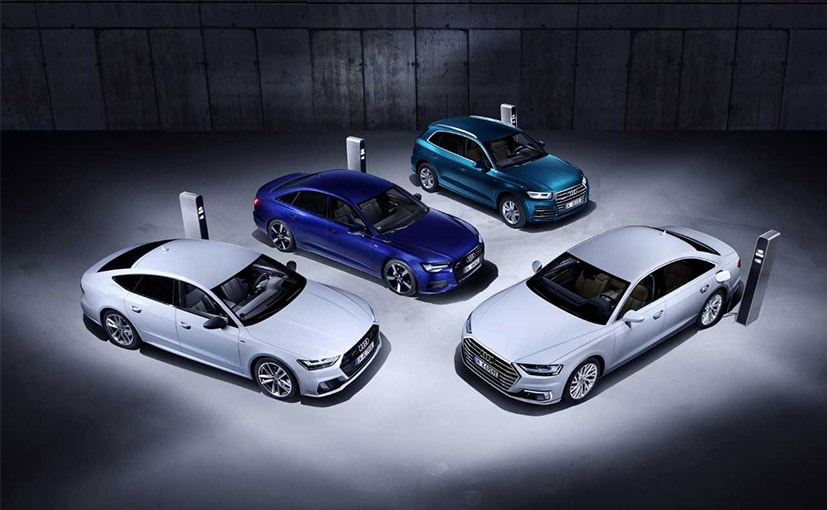
At the 2019 Geneva Motor Show Audi is presenting the plug-in hybrid variants of the A8, A7 Sportback, A6 and Q5. All these cars will come with an electric range of more than 40 km in the WLTP cycle. Thanks to different output levels, the customer has the choice between a comfort variant and a performance variant with a sporty design, depending on the model series. The new plug-in hybrid models will be available for order during the course of the year 2019 in European markets.
Plug-in hybrids from medium-size SUV to luxury sedan – Audi is expanding its range of plug-in-hybrids for sustainable mobility. Depending on the model series, there is a choice of two variants with different performance and equipment: A comfort model and a variant with a sporty configuration with S line scopes, a more tightly tuned suspension and drive setup with higher boost performance of the electric motor for more dynamic handling. From now on, the new plug-in hybrid models carry the ‘TFSI e’ signet. In the future, the ‘e-tron’ label will remain reserved exclusively for electrically driven cars.
The hybrid drive concept is designed so that customers can travel on around a third of their usual routes in electric-only mode during day-to-day driving. All new plug-in-hybrids by Audi use a turbo-charged gasoline engine with direct injection that works together with an electric motor that is integrated in the transmission. A lithium-ion battery beneath the luggage compartment floor supplies the electrical energy. As a result, the electric motor can support the combustion engine during acceleration.

At the same time, with regard to recuperation, the drive system resembles that of the new purely electrically driven Audi e-tron. It is designed for high efficiency and maximum recuperation performance. When breaking, the new Audi PHEV models recover up to 80 kW of energy. The electric motor handles slight decelerations, i.e. the majority in everyday traffic. For medium brake applications, the task is divided between the hydraulic wheel brakes, which perform this task alone only with a deceleration of more than 0.4 g.
The lithium-ion battery for the A6, A7 and A8 is made up of 104 pouch cells, which are combined in eight modules. It stores 14.1 kWh of energy at a voltage of 385 V. The lithium-ion battery in the Q5 comprises prismatic cells and has the same capacity. In each case, the cooling circuit of the battery is integrated in the low-temperature circuit, which supplies the electric motor and the power electronics. The power electronics transform the direct current of the high voltage-battery into a three-phase current for the electric motor; when recuperating, it does the opposite. The standard heat pump ensures efficient vehicle climate control and can generate up to 3 kW of heat energy from 1 kW of electrical energy with the waste heat occurring in the vehicle.
The A8 with plug-in hybrid drive has a combustion engine and a permanently excited synchronous motor as an electric motor. It is integrated together with the clutch in the eight-gear tiptronic, which passes the torques to the quattro permanent all-wheel drive. The luxury liner drives as a 5.3-meter long A8 L variant with an extended wheelbase. The Audi A7 and A6 models with plug-in hybrid drive use the same powertrain. The battery capacity is identical to that of the Audi A8 PHEV. Together with the electric motor that is integrated in the dual clutch transmission, a gasoline engine ensures that there is ample output and torque. Both models are available in two output levels with different boost performance. The powertrain in the Audi Q5 PHEV follows the same concept as the Audi A6 and A7.
The plug-in hybrid models have the following drive modes: EV, Auto and Hold. With the operating mode button, the driver can select from these three basic settings: Priority for the electric drive, fully automatic hybrid mode or save power for a later phase of the journey. In “Auto” mode, the PHEVs use the intelligent interaction of the electric motor and the combustion engine for maximum efficiency. In “Hold” mode, the drive management controls the powertrain so that the current charge status of the battery is maintained, e.g. for driving later in electric-only mode in urban areas
[“source=ndtv”]
